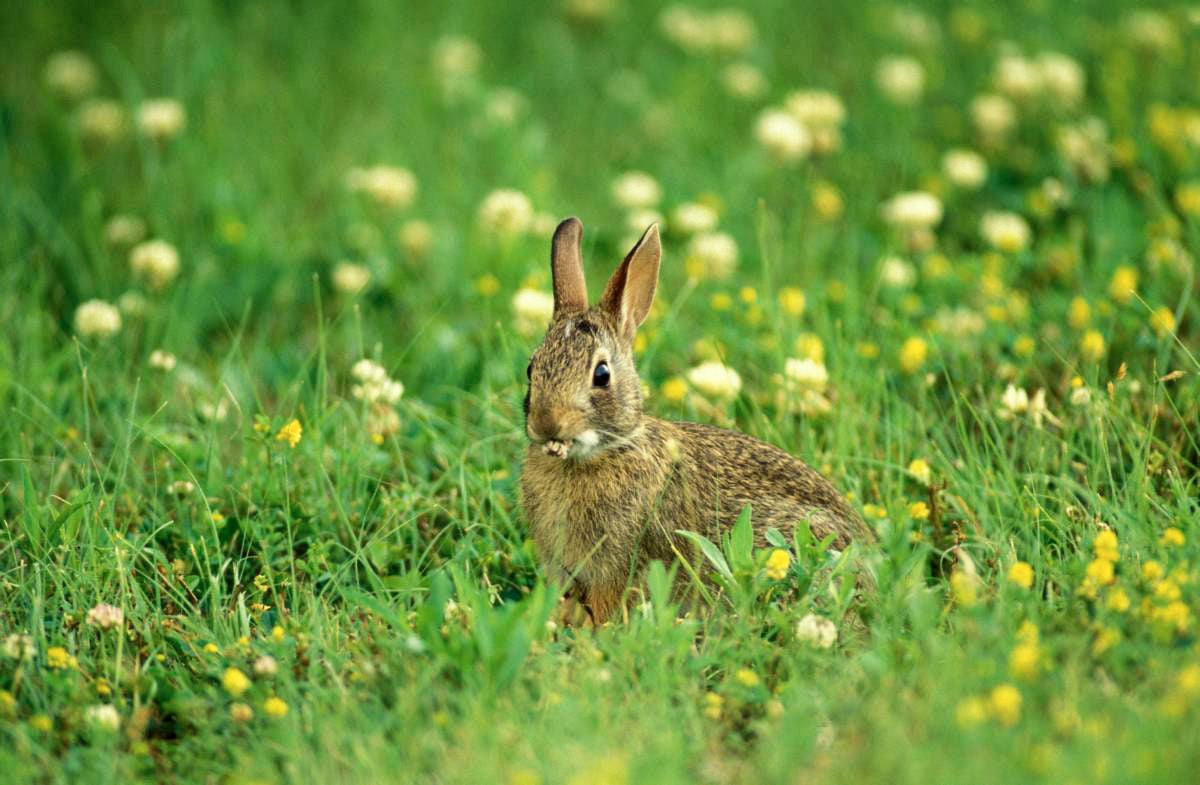Cottontails are often abundant in suburban and urban areas, where their feeding habits sometimes lead to conflicts with property owners.
The eastern cottontail rabbit, swamp rabbit, and black-tailed jackrabbit are the only three types of rabbits that live in Missouri. The cottontail is the most common and can be found throughout the state.
Under good conditions, the cottontail's home range is often less than 5 acres. Therefore, the average-size Missouri farm and many recreational properties have plenty of room for rabbit management.

Rabbits thrive in early successional habitats comprised of mixed grasses, forbs, and young woody brush. Managing your land for a wide diversity of plants will ensure rabbits have plenty of good food and cover choices.
Title
Grass Cover
Cottontails choose mostly open areas with scattered grasses and other herbaceous vegetation for nesting. These areas provide good cover as well as abundant foods. While rabbits may nest even in short pasture or mowed areas, vegetation that is 8 inches or taller affords better cover. Leave some areas unmowed and monitor grazing to ensure adequate cover.
Title
Downed Tree Structures
Dense, well-distributed protective cover is the most critical element in good rabbit habitat. Downed tree structures (DTS) located in the right places bring the quickest response of all the management tools, and rabbits may begin using them within hours of construction.
Place DTS close to other permanent cover, such as briers, fencerows, or woods. Don’t burn DTS left from tree clearing. Instead, push them to the edges of the field to create cover.
Title
Edge Feathering
This is another effective practice for improving woody cover. By making sure to kill any dense, sod-forming grasses beneath the edge feathered trees, you will provide a variety of food and cover plants intermixed with the brushy downed tops.
Title
Natural Cover
In addition to man-made brushy covers, rabbits will readily use thickets of native briers and shrubs such as blackberry, plum, and dogwood. Some nonagricultural areas — such as woodlands, gullies, and pond sites — that are allowed to grow briers, brush, and tree sprouts will provide excellent habitat for rabbits and other wildlife.
Improve existing cover and allow grass and shrubs to thrive by fencing these areas to control cattle access. When fencerows are protected from grazing and the larger trees along the row are topped, the resulting low, dense growth provides good rabbit cover.
Rabbits are herbivores. In the fall and winter rabbits eat sprouting wheat, corn kernels, and milo seeds. Cheat, an annual grass, is an important food during early spring. Rabbits will eat bluegrass nearly year-round, although they don’t eat it heavily during the summer. Good summer foods are white clover, Korean lespedeza, and crabgrass.
Food plants should be adjacent to good escape cover.
Although rabbits drink from surface water during hot dry spells, they obtain most of the water they need from the succulent plants they eat.
- alfalfa
- asters
- bluegrass
- cheat (chess)
- cinquefoil
- clovers
- crabgrass
- crop residues
- dandelion
- fall panic grass
- fleabanes
- horse nettle
- knotweed
- Korean lespedeza
- nodding foxtail
- plantains
- poison ivy
- ragweeds
- sedges
- smartweeds
- strawberry
- sumacs
- tall thistle
- tick trefoils
- timothy
- wheat
Learn to improve cottontail rabbit habitat on your Missouri land and to control wild rabbits if they become a nuisance.





















